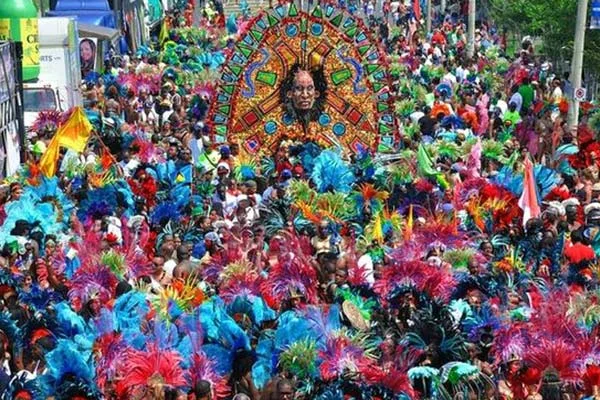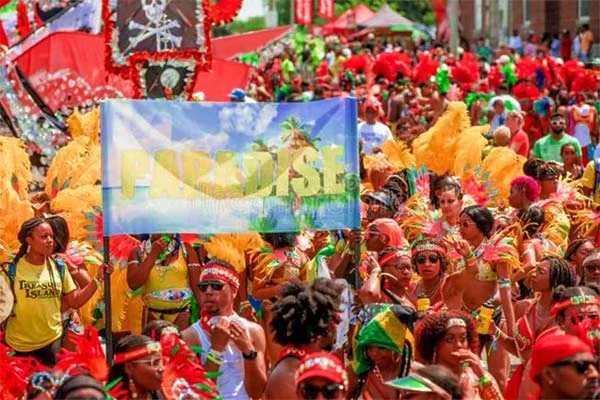- Elnaz Navidi Mjd
- information
- 823 views
- 0 comments
Caribana, also known as the Toronto Caribbean Carnival, is a vibrant and colorful festival held annually in Toronto. It began in 1967 as a way for the Caribbean community to share their culture during Canada's Centennial celebrations. As time went on, it became the largest Caribbean Festival in North America, gaining more than 1 million people from all over the world. This event is cheerful in the Caribbean culture, wearing music, dance, food, and incredible costumes. Typically held in late July or early August, it culminates in a huge parade along Toronto's waterfront. Caribana also hosts parties, live performances, steel drum competitions, and plenty of delicious Caribbean food.
Table Of Content

The History of Caribana
The Caribbean carnival, which started in the 18th century, gave rise to Calibana. Africans who had been enslaved in a places like Trinidad and Tobago used these celebrations to express their culture and resist injustice. These celebrations became much more significant once slavery was abolished. Immigrants to Canada and the Caribbean carried back these customs. To commemorate Canada's centennial, a group of Caribbean Canadians established Caribana in 1967. The event started to happen every year because of how well it was received. Caribbean immigrants now have the chance to enjoy and share their heritage with fellow Canadians thanks to Caribana. There was a lot of dancing, singing, and costumes in the first parade, which was pulled up by YONGE STREET. Today, Caribana is one of Toronto's most popular events, drawing visitors from around the globe.
Cyrus Crafts; Luxury & Unique Products
Cultural Significance of Caribana
In the heart of Toronto, Caribana is more than just a festival; it’s a lively celebration of Caribbean culture. Every summer, the streets fill with colorful costumes, catchy music, and a spirit that brings people together. It’s a special time for the Caribbean community to proudly share their rich traditions and heritage. But Caribana is about more than the parade; it’s about unity, pride in one’s culture, and letting everyone feel the joy and rhythm of the Caribbean. During this wonderful time, everyone is welcome to experience the heart of the islands.
Celebrating Caribbean Heritage
Showing everything from the islands' delicious cuisine and artwork to their vibrant music and dance traditions, Caribana is a carried celebration of the Caribbean's variety of cultures. Every island contributes a distinct musical style, such as the vibrant energy of Trinidad's soca, the vibrant spirit of Haitian kompa, or the upbeat rhythms of Jamaican reggae. Despite being geographically and linguistically distinct, these islands have a shared past that Caribana emphasizes. To celebrate their common ancestry, Caribbean Canadians from Barbados, Grenada, Guyana, the Dominican Republic, and other countries come together for the celebration.In order to reflect Toronto's incredible diversity, Caribana, which honors both Caribbean heritage and Canada's multicultural spirit, has grown beyond its Caribbean roots to include people from all backgrounds. Caribana's openness is one of its strongest features; anybody can take part as a performer, merchant, or spectator, creating a community that celebrates variety and unites everyone in the quest for a more inclusive society.
You can click here" Cultures in Canada: A Study on Canada's Multiculturalism " to get more information about the cultures in Canada.
Key Events and Highlights of Caribana
Caribana spans several weeks and includes a variety of events and activities that draw thousands of participants and spectators. Below are some of the festival's most iconic and anticipated events:
- The Grand Parade: The main event of Caribana is the Grand Parade, a huge procession that takes place along Lakeshore Boulevard in Toronto on the first weekend of August and features hundreds of masqueraders wearing exquisite, handcrafted costumes that frequently take months to create. A stunning demonstration of artistic talent and cultural expression, the costumes are composed of feathers, beads, sequins, and other materials. Mas bands, or groups of masqueraders, march and dance in the streets to the energetic sounds of soca, calypso, and steelpan music. The parade's atmosphere is electric, with vibrant colors, infectious rhythms, and an overwhelming sense of joy and unity.

- J'ouvert: J'ouvert is a beloved Caribana event that happens just before sunrise. The name comes from the French phrase jour ouvert, meaning "daybreak." This tradition began in Trinidad and Tobago’s carnival and involves people dancing in the streets covered in paint, mud, or powder, while lively music fills the air. Known for its fun and spontaneous energy, J'ouvert marks the exciting start of the carnival celebrations.
- King and Queen Showcase: One of the highlights of Caribana is the King and Queen Showcase, where each mas band’s leaders compete for the titles of King and Queen of Caribana. They wear stunning, over-the-top costumes with huge wings, grand headdresses, and intricate designs that can stretch out several meters wide. The competition is a dazzling display and shows off the incredible creativity and skill of the costume designers.
- Pan Alive Steelpan Competition: Steelpan music is a fundamental part of Caribbean culture, and the Pan Alive competition brings this musical tradition to the forefront. Held at Lamport Stadium, Pan Alive showcases the talents of steelpan bands from across Canada and the Caribbean. The bands compete to see who can deliver the best performance, with each group playing a selection of calypso, soca, and other Caribbean tunes on steel drums.
- Caribana Lime: Caribana Lime is an event that allows attendees to experience Caribbean cuisine, crafts, and culture in a more relaxed setting. Held in various locations throughout the festival, Caribana Lime offers a space for families and friends to gather, enjoy live performances, and indulge in Caribbean food and drink. From jerk chicken to roti and callaloo, festival-goers can sample authentic Caribbean dishes while soaking in the festive atmosphere.
If you want to be informed about Cabada’s Cuisines click this article" Canadian Cuisines: Introduction and Simple Recipes ".
Economic and Social Impact of Caribana
Caribana brings a huge economic boost to Toronto, bringing in millions of dollars each year. The festival draws over a million visitors, with many traveling from across Canada, the U.S., and even further. Local hotels, restaurants, and businesses benefit greatly from the flood of tourists, making Caribana one of the most important events on Toronto’s calendar. Beyond just the money, Caribana has a powerful social impact. It encourages cultural exchange, unity, and inclusion. For Caribbean Canadians, it’s a chance to celebrate their heritage and share it proudly with others. Caribana also gives Caribbean artists, musicians, and performers a big platform to showcase their talents to a global audience.
Challenges and Controversies
Despite its success, Caribana has faced challenges and controversy over the years, one of the biggest being raising the funds needed to grow the festival. As the festival grew, so did the costs associated with its organization and operation. There were also legal disputes over the ownership and branding of the festival, and Caribana was renamed \"Toronto Caribbean Carnival\" in 2011. At times, safety problems arose, and large crowds led to violence and riots. Still, the organizers worked on improving security measures, and the festival remains a festive, family event for the vast majority of participants.
The Future of Caribana
Caribana has become a big part of what makes Toronto unique and colorful. As the festival grows, it faces the challenge of staying true to its Caribbean roots while also thriving as a major event. Some people feel it’s become too focused on business, with sponsors taking attention away from the celebration of Caribbean culture. However, there are ongoing efforts to keep Caribana genuine, reflecting the real spirit and contributions of the Caribbean community in Canada. Looking forward, Caribana is set to keep evolving, blending new cultural expressions with its carnival traditions. The festival will continue to symbolize freedom, diversity, and unity—allowing Caribbean Canadians to honor their heritage and welcoming everyone to join the celebration.
The last words of Cyrus about Caribana
Thanks for reading through to the end of the article; we try to give complete information about the Caribbean festival. All in all, Caribana, Canada’s vibrant Caribbean festival, has grown from a one-time event in 1967 to North America’s largest celebration of Caribbean culture. It showcases music, dance, food, and costume, representing freedom, diversity, and unity. Despite challenges, Caribana remains a crucial part of Toronto’s cultural identity and continues to evolve while staying rooted in its Caribbean heritage, International CyrusCrafts. Similar articles about Canada can be found on our CyrusCrafts website. We recommend checking them out.









Comments (0)